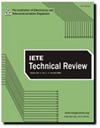Critical Comprehensive Performance Analysis of Static BIPV Array Configurations to Reduce Mismatch Loss and Enhance Maximum Power Under Partial Shading
IF 1.8
4区 计算机科学
Q2 ENGINEERING, ELECTRICAL & ELECTRONIC
引用次数: 3
Abstract
On-grid and off-grid building integrated photovoltaic (BIPV) systems require a large size BIPV array (LSBA) as their major renewable energy generator. Partial Shading (PS) significantly contributes to power loss in LSBA. One effective solution to mitigate the adverse effect of PS in LSBA is the application of fixed or static BIPV array configurations (BIPV-ACs). This research article critically compares the different fixed BIPV-ACs for modelling, designing and critical analysis of LSBA. Different existing and proposed fixed BIPV-ACs are modelled and simulated in MATLAB/Simulink under six dissimilar cases of PS patterns. Further, the performance is investigated in terms of global maximum power point (G-M-PP), mismatch loss (ML), fill factor (FF), efficiency (η), relative power loss (RPL) and relative power gained (RPG) to identify the best BIPV-AC. Experimental justification of simulation results under two PS pattern cases is reported. The best BIPV-ACs with high G-M-PP and low ML are Total-Cross-Tied (TCT), Triple-Tied (TT), Modified Triple-Tied (M-TT) and Hybrid Bridge-Linked Total-Cross-Tied (H-BL-TCT). Finally, the comprehensive critical analysis reveals that the H-BL-TCT array is the best performing array with low ML, high FF and η, and high G-M-PP with low wiring requirements than the TCT array. The simulation results conclude that the H-BL-TCT array improves G-M-PP by 6.40 %, reduces ML by 4.23 %, and improves FF & η by 4.58 % and 0.54 %. The experimental results infer that the H-BL-TCT array improves G-M-PP by 0.83 %, reduces ML by 0.75 %, and improves FF & η by 0.88 % and 0.09 %.在部分遮阳下减少失配损耗和提高最大功率的静态BIPV阵列配置的关键综合性能分析
并网和离网建筑一体化光伏(BIPV)系统需要一个大尺寸的BIPV阵列(LSBA)作为其主要的可再生能源发电机。部分遮阳(PS)显著地导致了LSBA的功率损失。一种有效的解决方案是在LSBA中应用固定或静态BIPV阵列配置(BIPV- acs)。本文对不同的固定bipv - ac进行了批判性比较,用于LSBA的建模、设计和批判性分析。在MATLAB/Simulink中对六种不同的PS模式下现有的和即将提出的固定bipv - ac进行了建模和仿真。进一步,从全局最大功率点(G-M-PP)、失配损耗(ML)、填充因子(FF)、效率(η)、相对功率损耗(RPL)和相对功率增益(RPG)等方面考察了BIPV-AC的性能,以确定最佳BIPV-AC。对两种PS模式下的仿真结果进行了实验验证。高G-M-PP和低ML的最佳BIPV-ACs是全交联(TCT)、三联(TT)、改良三联(M-TT)和混合桥联全交联(H-BL-TCT)。最后,综合临界分析表明,H-BL-TCT阵列具有较低的ML、较高的FF和η、较高的G-M-PP和较低的布线要求,是较TCT阵列性能最好的阵列。仿真结果表明,H-BL-TCT阵列使G-M-PP提高了6.40%,ML降低了4.23%,FF和η分别提高了4.58%和0.54%。实验结果表明,H-BL-TCT阵列使G-M-PP提高了0.83%,ML降低了0.75%,FF和η分别提高了0.88%和0.09%。
本文章由计算机程序翻译,如有差异,请以英文原文为准。
求助全文
约1分钟内获得全文
求助全文
来源期刊

IETE Technical Review
工程技术-电信学
CiteScore
5.70
自引率
4.20%
发文量
48
审稿时长
9 months
期刊介绍:
IETE Technical Review is a world leading journal which publishes state-of-the-art review papers and in-depth tutorial papers on current and futuristic technologies in the area of electronics and telecommunications engineering. We also publish original research papers which demonstrate significant advances.
 求助内容:
求助内容: 应助结果提醒方式:
应助结果提醒方式:


